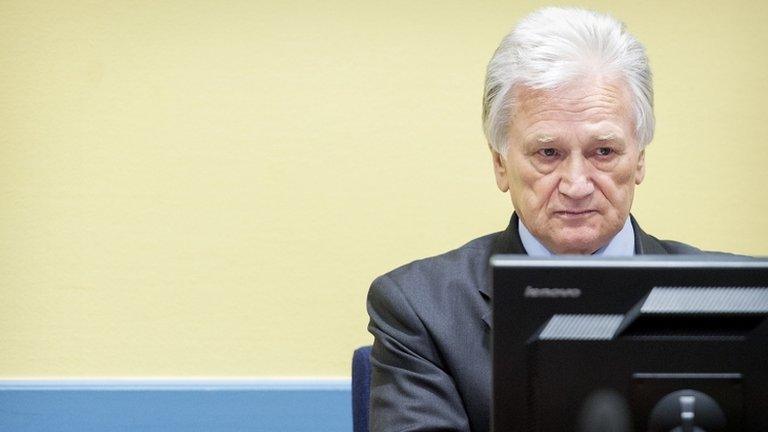Dutch state liable over 300 Srebrenica deaths
- Published
The BBC's Anna Holligan: "Lawyers representing the soldiers say they did try to protect the refugees"
A Dutch court has ruled that the Netherlands is liable over the killings of more than 300 Bosniak (Bosnian Muslim) men and boys at Srebrenica in Bosnia-Hercegovina in July 1995.
The men and boys were among 5,000 Bosniaks, mostly women and children, sheltering with Dutch UN peacekeepers.
But the Dutch state was cleared over the deaths of more than 7,000 other men killed in and around Srebrenica.
The Srebrenica massacre is considered Europe's worst since World War Two.
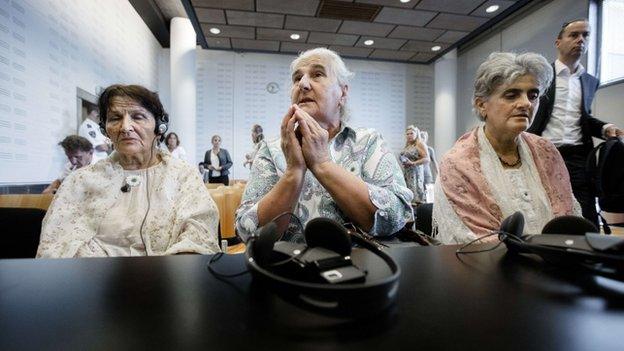
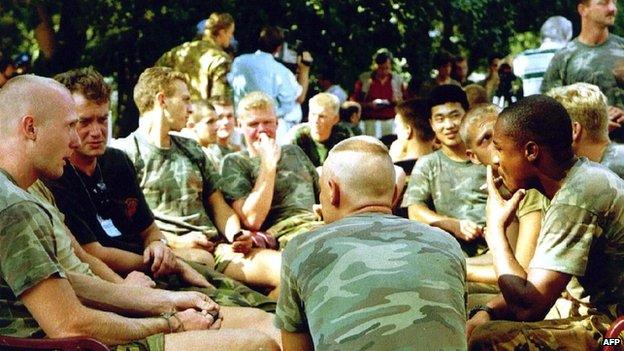
A battalion of Dutch peacekeepers was stationed at Srebrenica in 1995


"The whole valley was scattered with personal belongings and remains of clothing. There were no bodies - carrion would have removed any remains left by then"
Jamie Adam, UN Mine Action Centre for Bosnia-Hercegovina

Compensation
The case was launched by relatives of the victims under the name "Mothers of Srebrenica".
The Hague district court said that the Dutch peacekeeping forces, Dutchbat, did not do enough to protect more than 300 of the Bosniaks and should have been aware of the potential for genocide to be committed.
It said the state should have known they would be killed by Bosnian Serbs when they handed them over from the UN compound of Potocari.
"It can be said with sufficient certainty that, had Dutchbat allowed them to stay at the compound, these men would have remained alive. By co-operating in the deportation of these men, Dutchbat acted unlawfully," the court added.
Munira Subasic, president of the "Mothers of Srebrenica": "The court definitely did not recognise justice for other groups of victims"

Analysis: Anna Holligan, BBC News, The Hague
This was a bittersweet judgement for the "Mothers of Srebrenica".
Three of the women came to court bearing the hopes of thousands of survivors on their shoulders. They sat united on the front bench in a dignified silence, as the cameramen jostled to capture their reactions.
The verdict means the mothers, wives and children of more than 300 Bosniaks who were deported from the Dutch-administered compound in Potocari on 13 of July 1995 will be entitled to compensation. But the Mothers of Srebrenica's relatives were not among that group.
For them, it was never about the money. As their lawyer put it, 'How do you put a price on life?'
For the "Mothers of Srebrenica" the verdict failed to deliver the justice and accountability they have dedicated their lives to pursuing.

It said that the Dutch state must accept some degree of responsibility for what happened and pay compensation to the families of more than 300 victims.
But the court stopped short of holding the Netherlands liable for the fate of the majority of men killed in Srebrenica, saying that many of the male refugees at the time had not fled to the UN compound but "fled to the woods in the vicinity of Srebrenica".
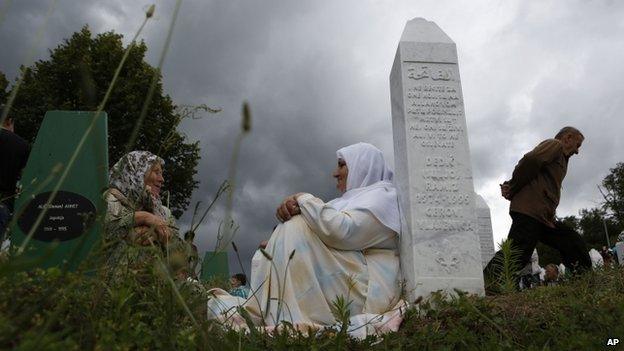
The Muslim-majority town was a UN-protected area besieged by Serb forces throughout the war
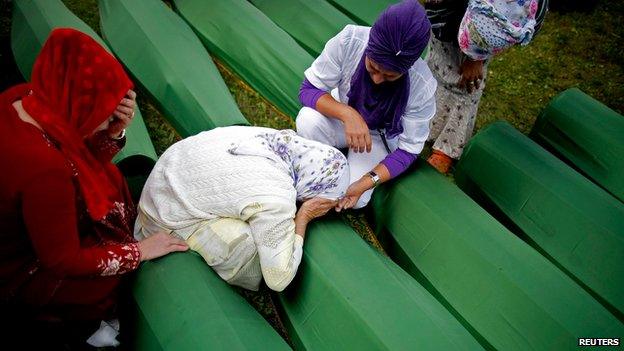
Hundreds of Bosniaks returned to Srebrenica last week for the 19th anniversary of the massacre
The BBC's Anna Holligan, in the courtroom, says it was a hugely significant ruling but a heart-breaking verdict for the women because the Dutch state was only found partly responsible for the deaths of more than 300 of more than 7,000 men killed.
This, she says, means many of the relatives of the victims will not be entitled to compensation.
"Obviously the court has no sense of justice,'' said Munira Subasic, a representative of the relatives' group.
"How is it possible to divide victims and tell one mother that the Dutch state is responsible for the death of her son on one side of the wire and not for the son on the other side?'' she added.
During the 1992-1995 war, Bosniaks from the surrounding area sought refuge in the town of Srebrenica as the Bosnian Serb army carried out a campaign of ethnic cleansing, expelling non-Serb populations.
The UN declared Srebrenica a "safe area" for civilians in 1993. It fell in July 1995, after more than two years under siege.
Thousands of Bosniaks went to the UN base just outside Srebrenica at Potocari.
However, the Dutch soldiers told them they would be safe and handed the men and boys over to the Bosnian Serb army.
The women and young children were transported to a Bosniak-majority area.
The two key figures of the wartime Bosnian Serb leadership - one-time President Radovan Karadzic and General Ratko Mladic - are on trial for war crimes at the UN tribunal in The Hague.

Timeline of Srebrenica siege:
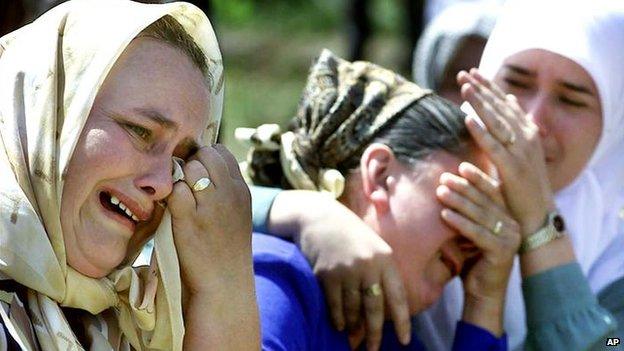
6-8 July 1995: Bosnian Serb forces start shelling Srebrenica enclave
9 July: Bosnian Serbs step up shelling; thousands of Bosnian Muslim refugees flee to Srebrenica
10 July: Dutch peacekeepers request UN air support after Bosnian Serbs shell Dutch positions. Large crowds of refugees gather around Dutch positions
11 July: More than 20,000 refugees flee to main Dutch base at Potocari. Serbs threaten to kill Dutch hostages and shell refugees after Dutch F-16 fighters bomb Serb positions. Bosnian Serb commander Ratko Mladic enters Srebrenica and delivers ultimatum that Muslims must hand over weapons
12 July: An estimated 23,000 women and children are deported to Muslim territory; men aged 12-77 taken "for interrogation" and held in trucks and warehouses
13 July: First killings of unarmed Muslims take place near village of Kravica. Peacekeepers hand over some 5,000 Muslims sheltering at Dutch base in exchange for the release of 14 Dutch peacekeepers held by Bosnian Serbs
14 July: Reports of massacres start to emerge

- Published16 July 2014
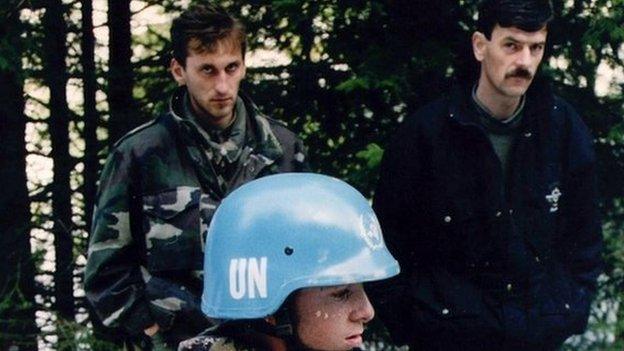
- Published16 July 2014

- Published16 July 2014
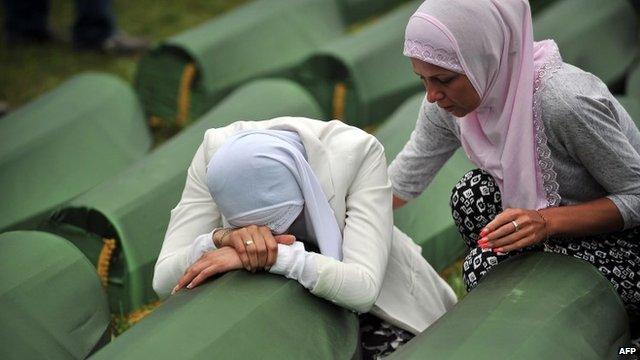
- Published9 July 2012
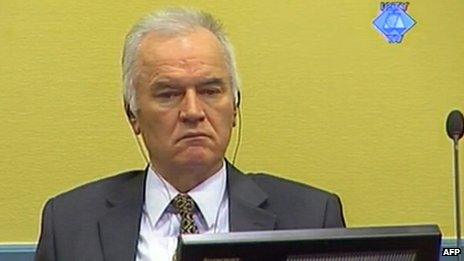
- Published28 February 2013
